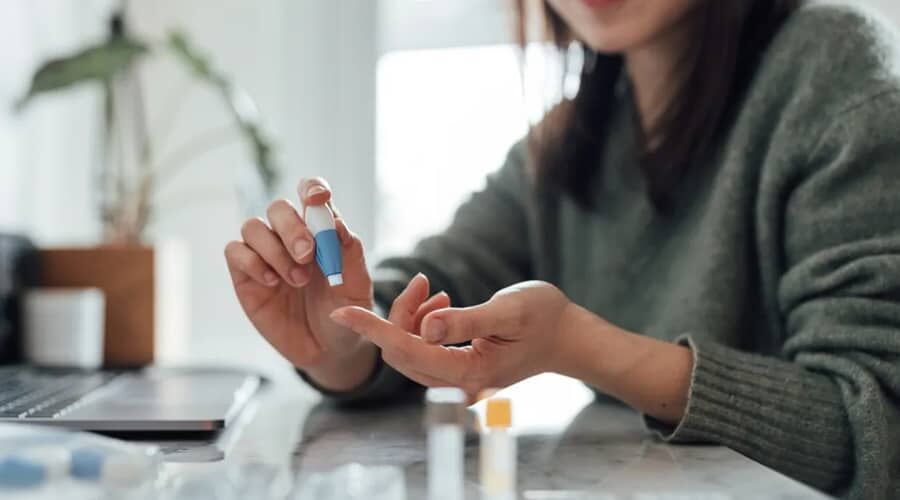
Blood sugar levels are vital for our whole body, as cells need glucose to produce energy.
Blood sugar levels are regulated by hormones produced by the pancreas, in particular insulin and glucagon. Insulin helps cells take up glucose from the blood, while glucagon stimulates the release of glucose stored in the liver.
Blood glucose levels are raised by eating foods.
After eating food, glucose is released into the bloodstream during digestion, which increases blood glucose levels. Insulin from the pancreas then enters the bloodstream and helps cells to absorb glucose, reducing blood glucose levels.
If you have diabetes, your blood glucose levels are usually higher than normal. This is because people with diabetes either do not produce insulin in their body (type 1 diabetes) or are unable to use the insulin they do produce properly (type 2 diabetes). High blood sugar levels can cause long-term damage to the body. So it is important that people with diabetes follow their medical treatment closely and maintain a good diet and lifestyle.
Blood glucose levels depend on many factors, such as food intake, physical activity, lifestyle and health.
A healthy lifestyle, diet and exercise can help maintain normal blood glucose levels.
People with diabetes may need insulin injections, oral medications or insulin pumps to maintain proper blood glucose levels and prevent long-term health problems.
Glucose metabolism is one of the most important metabolic processes in the human body, during which cells produce energy from glucose.
It can be divided into several stages, which include glycolysis, the citric acid cycle, the electron transport chain and oxidative phosphorylation.
Glucose begins during glycolysis, which is the decomposition of sugar molecules under anaerobic conditions. During glycolysis, the glucose molecule is broken down into fractionated pieces and 2 molecules are removed as pyruvate, which follow further metabolic pathways. In addition, glycolysis produces 2 molecules of ATP and 2 molecules of NADH.
The citric acid cycle starts from pyruvate (the final product of glycolysis). In this process, pyruvate enters the mitochondria and is broken down to produce acetyl-CoA. The acetyl-CoA is taken into the citric acid cycle, where nutrients from carbohydrate, fat and protein metabolism are also incorporated. During the citric acid cycle, additional ATP, NADH and FADH2 are produced.
The reduced forms of NADH and FADH2 in the electron transport chain transport electrons across the mitochondrial membrane and use the electron energy for oxidative phosphorylation. During oxidative phosphorylation, the energy of the electrons is converted to ATP and the cells use this ATP to meet their energy needs.
The metabolism of glucose in the human body is extremely important for meeting the body’s energy needs.
Regular exercise and a healthy diet can help maintain proper glucose metabolism and optimal health. However, if glucose metabolism is disturbed, for example in the case of diabetes, insulin management and proper adjustment of diet can help to control blood glucose levels and avoid complications.


